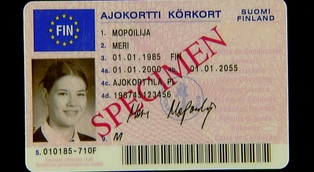High potential? Start-ups
‘to create 1,600 jobs by 2013′

The Minister for Jobs Richard Bruton says high potential start-ups will create 1,600 jobs by 2013
Ninety-two high-potential start-ups (HPSUs) supported by Enterprise Ireland are aiming to employ 1,600 people between them by the end of 2013, as well as generating a combined €200m of sales within three years. That’s according to the Minister for Jobs, Enterprise and Innovation Richard Bruton, TD, who was speaking at the opening of the Enterprise Ireland High Potential Start Ups Showcase today.
Bruton said these companies will vie to employ more than 1,600 new staff by the end of 2013 and to generate more than €200m in annual sales within three years.
Today’s showcase also features 55 early stage entrepreneurs who have been supported by the Enterprise Ireland Competitive Start Fund to test the market for their products and services and progress their business plans for the international marketplace.
Enterprise Ireland also released its Q4 results today pertaining to HPSUs. According to the agency, support was agreed during Q4 2011 for 19 companies, which have committed to creating 365 jobs by the end 2013.
NEW TECHNOLOGY VENTURES
To give you a flavour of the type of HPSUs that are aiming to create jobs, Enverian is a clean-tech venture that provides software solutions to the renewable-energy sector. Digital start-up Betapond, meanwhile, sells bespoke Facebook apps to large brands and PR agencies. Back in January,Betapond raised €1.15m in venture capital funding.
Light-Keeper Media is another digital start-up that has created Fantom, an online community for fans who enjoy collecting and trading digital trading cards. Fantom raised €600,000 in investment late last year. Hailing from DCU Invent, Pilot Photonics is another HPSU that is developing technology to increase the capacity of existing telecom networks.
HIGH-GROWTH SMALL FIRMS TO HELP REBUILD IRELAND’S ECONOMY
Speaking about rebuilding Ireland’s economy, Bruton spoke about how the country needs to also support the creation of high-growth small businesses, as well as attracting multinational giants.
He said the Government, under its Action Plan for Jobs, has committed a series of targets for 2012. Bruton said this would include supporting 95 of these companies in 2012, as well as an increase of 50pc in the number of overseas entrepreneurs supported and an increase of 40pc in the number of new HPSUs arising as spin-outs from research.
“I am determined to achieve these ambitious targets so that we can create more high-growth indigenous companies and achieve the employment levels we so badly need,” said Bruton.
Hugh Cooney, chairman of Enterprise Ireland, also spoke about initiatives such as the Competitive Start Fund, which provides early stage financing to entrepreneurs. He said both this fund and the €10m International Start-Up Fund for overseas entrepreneurs to locate start-up businesses in Ireland are already “paying dividends”.
Ireland’s new plastic credit-card style driving licence now revealed valid from January 2013
A plastic credit-card style driving licence will be introduced for all new licences issued from next January.

The plastic credit-card style licence is to be introduced for all new licences issued from next January
The design will be the same as the one used for driving licences in Finland, and is the same pink tone as the existing full Irish licence.
It will feature the driver’s name and date of birth, their photo, signature and any restrictions or endorsements such as the need to wear glasses and any penalty points accrued.
European law requires all Member States to introduce a plastic card model by next January, and the Irish one will come into force on the 19 January 2013.
The European legislation includes an option to feature the driver’s address on the licence but the Department of Transport opted not to do this for security and logistical reasons.
Later versions of the card are likely to include a micro-chip which could be used to store other information.
Minister for Transport, Tourism & Sport Leo Varadkar said consideration was given to incorporating the new Public Services Card into the new driving licence but that the European legislation did not allow for that.
Mr Varadkar also said he was holding talks with airlines about their accepting the new style licence as valid identification for air travel.
Currently Ryanair does not accept Irish driving licences as identification and Aer Lingus only accepts them for flights within Ireland or to the UK.
Once this new form of licence is introduced, the old paper style will no longer be issued, but they will be still valid. However any driver can trade in their old model for the new one before their renewal date for a fee which has yet to be decided.
The new licences will be issued centrally by the Road Safety Authority rather than by individual motor taxation offices as is currently the case. However people will still be able to purchase the licence in person at motor tax offices and perhaps even at post offices.
The Minister said this would mean only about 60 people would be required to issue the new licences rather than the 200 currently needed for the paper ones. He said this would allow those extra staff to be redeployed to other frontline service areas.
A tender process is currently underway to find a company to develop and operate a Plastic Card Delivery Unit which will produce the polycarbonate driving licences and learner permits ready for their introduction next January.
In Ireland 57% of pregnant victims of rape keep their babies
Figures from the Rape Crisis Network indicate 1,545 survivors of sexual violence attended centres in 2010. Of these, 75 were known to the network to have become pregnant as a result of rape.
“Ten [13 per cent] chose to terminate their pregnancies, while 10 [13 per cent] . . . chose to place their child for adoption or fostering.”
Forty-three (57 per cent) went on to parent their children and nine (12 per cent) miscarried or had stillbirths.
No comments:
Post a Comment